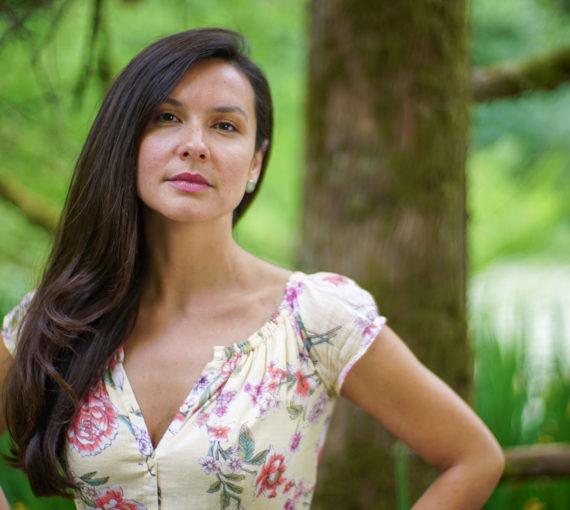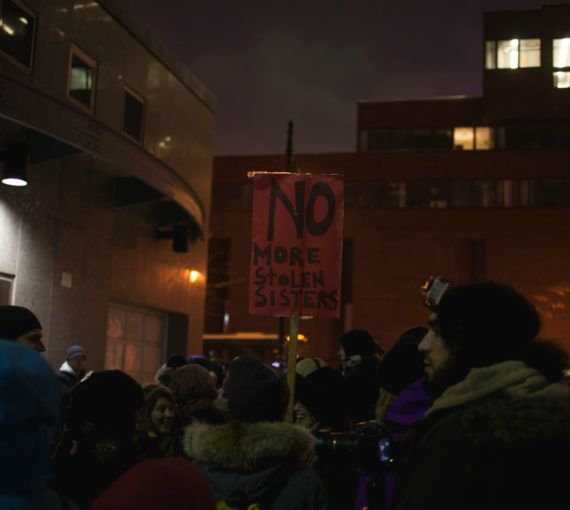
Pride events, held from June through September, remind us that queer and environmental issues are a process of constant, interrelated struggle. (Photo: Anna Shvets via Pexels )
Pride events, held from June through September throughout the country, celebrate the sexual and gender diversity of 2SLGBTQIA+ communities. For some, the green stripe of the colourful Pride flag represents nature — perhaps an indicator of how queer and environmental issues are a process of constant, interrelated struggle.
For this piece, I interviewed Nicolas Chevalier, a non-binary Concordia University student pursuing a bachelor’s degree in environmental science. They are an activist with Climate Justice Montreal, a member of Resource Movement and on the Front commun pour la transition énergétique inclusion and social justice committee.
They’ve been involved in organizing, mobilizing and educating for the past seven years.
Common roots and resistance
Queer and environmental issues stem from common roots: colonialism, capitalism, patriarchy and ableism. These injustices define Western societies’ imposed standards and world views.
“Until two years ago, a trans immigrant to Quebec could not change the gender designation on their official papers until seven years of residency. That meant they had to endure seven years of trying to rent apartments and being called a cheat,” Nicolas said.
Yet gender and sexual diversity abounds in nature, despite the dominance of a binary, anthropocentric model in science. For example, homosexuality exists in many plant and animal species, such as the male penguin.
Queer ecology aims to modify heteronormative paradigms and abandon binary ways of conceiving nature, by differentiating entrenched social ideologies from how the world really is, changing language and scientific theories and making room for interdependence and fluidity.
Nature can be free to be whatever it wants, as well as to have a certain harmony and solicitude.
“Nature can be free to be whatever it wants, as well as to have a certain harmony and solicitude. In contrast to patriarchal society, there is a desire for relationship between the elements,” Nicolas said.
Queer people often find safe spaces by gathering in rural or wilderness areas — such as beaches, parks, rivers and forests.
“When we talk about nature, we particularly think of places devoid of industrial, Western, accumulation, destruction and extraction footprints. This means that we find ourselves in an environment that is more in harmony with human relations and that can be redefined collectively.”
Environmental injustices
Like other marginalized peoples, queer communities are disproportionately affected by environmental injustices. These inequities are the result of existing social, economic and health disparities.
In times of crisis, queer people may be deprived of social capital and community support, which weakens their resilience in the face of destructive natural events, such as rising waters, storms or extreme temperatures.
As a result, climate change has a greater impact on their access to housing, and exacerbates the risks associated with physical and mental health, such as eco-anxiety.
Community care and interpersonal ties make it possible for people with similar realities to support each other.

The fact of being in a circle of people who share a vision of a possible future gives you energy, hope and the ability to carry on, knowing that you’re not alone.
Nicolas Chevalier
But the environmental movement and organizations don’t always offer space and time to focus on the needs, vulnerabilities and concerns of queer people. It’s essential to expand the conversation to these other possibilities and integrate new elements into climate struggles.
“We have to learn to live with a certain complexity, to work with our commonalities, while accepting and learning from our differences,” Nicolas said. For them, “patience,” “caring” and “mutual understanding” are key words.
We have to learn to live with a certain complexity, to work with our commonalities, while accepting and learning from our differences.
Now we must make political and community recommendations to integrate queer rights and liberation into environmental justice work, to strengthen community resilience and ensure no one is left behind in adapting to the climate crisis.


